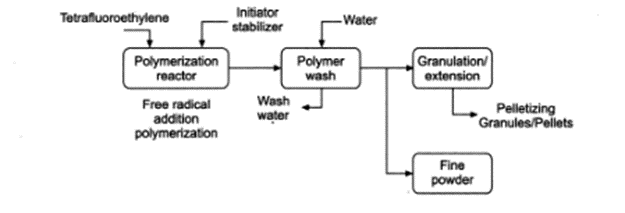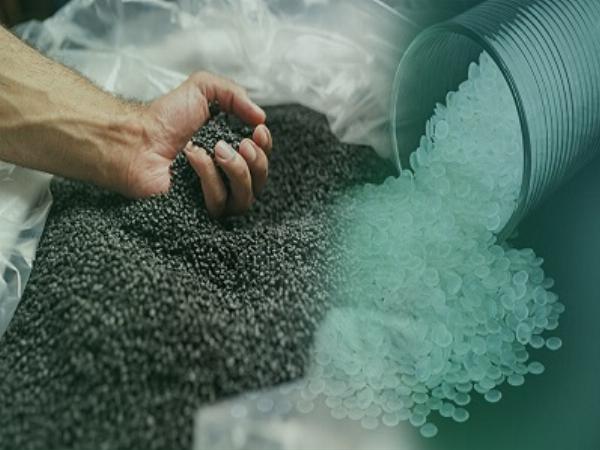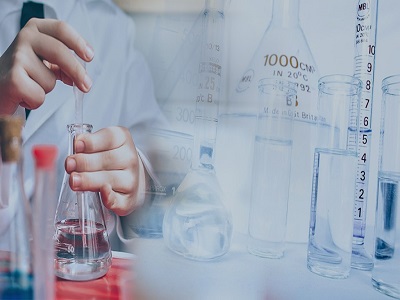Fluoropolymers (PTFE): Applications and Manufacturing Process

Strong 8k brings an ultra-HD IPTV experience to your living room and your pocket.
Fluoropolymers, a group of highly versatile plastics, contain super-strong carbon-fluorine bonds. This unique chemical bonding gives them properties like:
Chemical resistance: These polymers can hang with the toughest chemicals without breaking sweat (or melting).
Thermal stability: Bring on the heat! Fluoroplastics can handle extreme temperatures, making them perfect for high-performance applications.
Electrical insulation: Need to keep your electricity in check? Fluoroplastics are your go-to insulators.
The story starts in 1938, when the first fluoropolymer, polytetrafluoroethylene (PTFE), better known as Teflon was manufactured.
Here are some of the main topics we'll cover in this blog:
The Properties: Get to know the details of Fluoropolymers (PTFE)'s remarkable properties like toughness, clarity, and heat resistance.
Applications: Explore the applications of Fluoropolymers (PTFE)
Introduction
PTFE, short for Polytetrafluoroethylene, is the pioneer of fluoroplastics – a family of high-performance plastics known for their exceptional properties. Discovered in 1938 by Roy J. Plunkett, PTFE (also known as Teflon) stands out among fluoropolymers for its unmatched performance in terms of withstanding extreme temperatures, resisting chemicals, and offering the ultimate non-stick surface.
Their vivid set of properties include:
Exceptional chemical resistance: Most chemicals simply can't react with fluoropolymers due to the strong carbon-fluorine bond. This makes them ideal for applications where they might come into contact with harsh liquids or gases, like in chemical processing plants or laboratory equipment.
Good resistance to heat and low temperature: Fluoropolymers can withstand a wide range of temperatures, from extremely cold (like in cryogenic applications) to very hot (like in aircraft engines). They don't melt or lose their shape easily under these conditions.
Good electrical insulating power in hot and wet environments: Fluoropolymers excel at preventing electricity from flowing through them, even in hot and humid environments. This makes them valuable for electrical wiring in appliances, motors, and electronic devices.
Good resistance to UV light and weathering: Sunlight and ultraviolet (UV) radiation can degrade many materials over time. Fluoroplastics, however, are highly resistant to these effects and won't become brittle or crack easily when exposed to sunlight or outdoor conditions.
Low coefficient of friction: Fluoropolymers have an incredibly low coefficient of friction, meaning objects move very easily against them. This is what creates the non-stick property for which Teflon is famous.
Nonstick property over a wide temperature range: This makes them ideal for applications like cookware (like Teflon-coated pans) where food won't stick even at high cooking temperatures.
Manufacturing Process
For the production of PTFE - First, a crucial building block called tetrafluoroethylene is meticulously prepared. This meticulous process involves precise control and adherence to specific reaction pathways. Following this initial step, the focus shifts to the core of the process - the polymerization of tetrafluoroethylene. This fundamental phase involves specific reactions that ultimately yield the final product: PTFE.
To produce PTFE, tetrafluoroethylene monomers are polymerized within a pressurized batch reactor containing an aqueous solution. This process follows a free radical addition polymerization mechanism. The resulting polytetrafluoroethylene, or PTFE, can be obtained in various forms like granules, pellets, fine powder, or even an aqueous dispersion. The controlled environment of a batch reactor facilitates this free radical addition polymerization, ultimately yielding the desired PTFE polymer.
Applications of Fluoropolymers (PTFE)
Automotive
Due to its advantageous characteristics, PTFE finds application in the automotive sector. Its low friction and chemical resistance make it suitable for seals, gaskets, valves, O-rings, and even electrical insulation in wires and transformers.
Chemical Industry
PTFE's versatility shines in diverse applications. It tackles challenges from sealing gaskets to lining vessels and chemical tanks. PTFE, another fluoroplastic, takes the heat – literally. It's a star player in high-temperature environments, from fire safety applications to insulating heating elements and even jet engines! UV lamps and external aircraft parts also benefit from PTFE's heat resistance.
Consumer Goods
This versatile fluoroplastic finds a home throughout the food and beverage industry, from cookware to conveyor belts, thanks to its non-stick properties and ability to withstand food contact. This fluoroplastic is a workhorse in food and beverage production. It keeps food moving smoothly on conveyor belts, protects temperature sensors, and even coats non-stick surfaces for cooking equipment and food coverings.
Medical
PTFE's unique properties make it a hero in the medical field. From catheters and bio-containment vessels to syringes and sutures, this material plays a vital role in life-saving equipment. Its non-stick properties and biocompatibility make it a trusted choice for medical applications.
Market Outlook:
Fluoropolymers are in high demand due to their exceptional resistance to mechanical and chemical wear and tear. They are a versatile material used in various applications, including pumps, impellers, coatings for heat exchangers, and components like tanks, reaction vessels, autoclaves, and diaphragms. Fluoropolymers are ideal for manufacturing green technology products like solar panels and wind turbines because of their superior qualities. They help these products endure harsh weather conditions by shielding them from hail, rain, UV rays, humidity, strong winds, and extreme temperatures, ultimately resulting in increased durability. In addition, improvements in efficiency, safety, electrical and chemical resistance, corrosion protection, tensile strength, and the ability to withstand high temperature and pressures are attracting significant investor interest in the global fluoropolymers market for the foreseeable future. The global Fluoropolymers (PTFE) market stood at roughly 200 thousand tonnes in 2023 is anticipated to grow at a moderate CAGR of 4.21% by the year 2034.
Fluoropolymers (PTFE) Major Manufacturers
Significant companies in the Global Fluoropolymers (PTFE) market Shandong Dongyue Polymer Materials Co. Ltd., The Chemrous Group, Arkema, Zhonghao Chenguang Research Institute of Chemical Industry Co.Ltd., Zhejiang Jusheng Fluorochemicals Co. Ltd., Shangai 3F Fuyuan New Material Co. Ltd., Jiangsu Meilan New Materials Co. Ltd., Dyneon GmbH, and Others.
Conclusion:
Combining the best of both worlds, fluoropolymers offer incredible strength and durability, making them a perfect choice for demanding construction and performance applications. They also shine in terms of safety, as their heat resistance helps minimize fire hazards in high-rises and aircraft. Take PTFE for example: its exceptional heat tolerance and chemical inertness make it the go-to material for non-stick cookware, ensuring effortless cleanup and sparkling kitchenware. The fluoropolymer market, particularly for PTFE, is expected to surge in the coming years due to the growing demand from various sectors. This includes the chemical and industrial processing industry, the electrical and electronics industry, the mechanical industry, and even the automotive industry.
Note: IndiBlogHub features both user-submitted and editorial content. We do not verify third-party contributions. Read our Disclaimer and Privacy Policyfor details.







